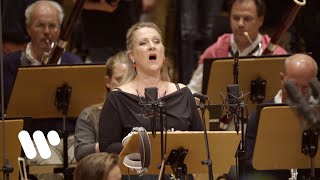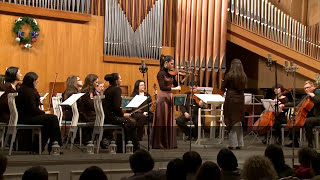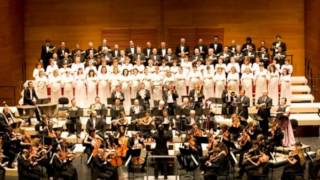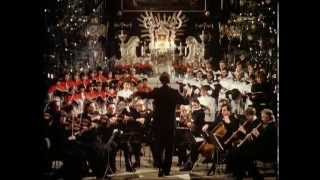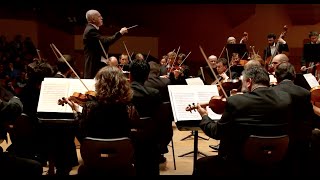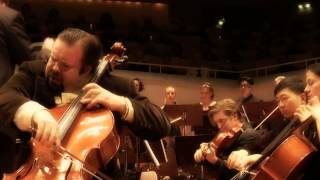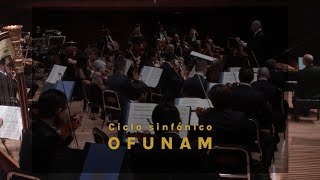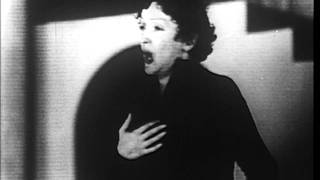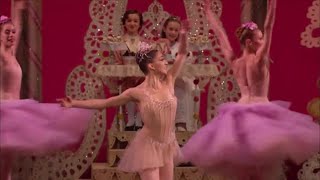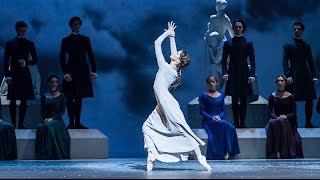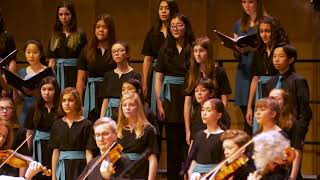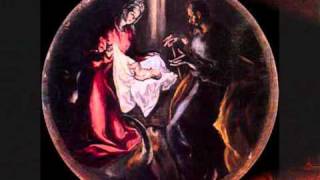
el terrorismo genocida que viene ejerciendo el
Estado de Israel contra el Pueblo Palestino
El 21 de Diciembre comienza el Invierno y comienzan los festejos de la Navidad cristiana
Sugerencias de iniciación a la música clásica
El presente vídeo está realizado por lo@s alumn@s de la Ramallah Friends School, ubicada en Cisjordania, que denuncian el exterminio que está sufriendo el pueblo palestino por parte del ejército israelí, mientras la mayoría de la población de este mundo mira hacia otro lado con el continuo alarde cínico de los propios valores.
Franz Xaver Gruber (1787-1863), compositor poeta y organista austríaco, fue un maestro de escuela y organista en la Iglesia de San Nicolás, en Oberndorf bei Salzburg, población cercana a Salzburgo, donde estrenó, en 1818, el famoso villancico Noche de paz, cuya música es de su autoría.
Noche de paz (Silent Night, Stille Nacht,) es un conocido villancico compuesto originalmente en alemán por el maestro de escuela y organista austriaco Franz Xaver Gruber; la letra fue realizada por el sacerdote austriaco Joseph Mohr. En 2018, al cumplirse el bicentenario del villancico, la Unesco lo declara Patrimonio Cultural e Intangible de la Humanidad. La canción ha sido grabada por muchos cantantes y en diversos géneros musicales; la versión de Bing Crosby es la más popular en todo el mundo siendo el tercer sencillo más vendido de la historia. La música que se interpreta en la actualidad difiere levemente de la original de Gruber, particularmente en las notas finales.
Hoy nos lo ofrece la soprano alemana Diana Damrau acompañada por el coro Knabenchor Hannover y la orquesta NDR Radiophilharmonie con los directores Riccardo Minasi y Richard Whilds.
Antonio Vivaldi (1678-1741) fue un sacerdote, violinista y compositor italiano conocido como el cura rojo (“il prete rosso”). Nació en Venecia y de niño aprendió a tocar el violín con su padre; a los 15 años ingresó en el Seminario y una vez ordenado sacerdote, apenas podía atender a sus obligaciones religiosas debido a sus problemas de salud; de modo que fue nombrado profesor de violín en un orfanato en el que impartía clases teóricas y de instrumento. A los 40 años es nombrado Maestro de Capilla en Mantua donde escribió sus famosas Cuatro estaciones. De allí se trasladó a Milán, luego a Roma; más tarde, de nuevo a Venecia y por último, a Viena donde fallecería. A lo largo de su vida compuso casi 800 obras, de las que la mitad fueron conciertos, 40 óperas, 60 obras religiosas y numerosas sonatas.
Las cuatro estaciones, la obra más conocida de Vivaldi, es un conjunto de cuatro conciertos para violín y orquesta (cada concierto está dedicado a una estación: Primavera, Verano, Otoño e Invierno). Aunque, inusualmente para la época, Vivaldi publicó los conciertos con unos poemas de acompañamiento que describían lo que quería representar en relación a cada una de las estaciones, proporciona uno de los ejemplos más tempranos y detallados de lo que después se llamaría música programática o descriptiva, música con un elemento narrativo.
Hoy ofrecemos El Invierno, explicado por el propio Vivaldi: I ALLEGRO (0´00´´). Helado. Tiritar entre la nieve plateada al severo soplo del hórrido viento; correr batiendo los pies en todo momento; y por el soberbio castañetear los dientes. II LARGO (3´36´´) Estar junto al fuego, tranquilos y contentos, mientras afuera la lluvia moja a ciento. III ALLEGRO (5´47´´) Caminar sobre el hielo, y a paso lento; por miedo a caer, avanzar con cuidado. Ir firme, resbalar, caerse al suelo; de nuevo ir sobre el hielo y correr rápido sin que el hielo se rompa, y se desmenuce. Sentir que sale de las puertas herradas; Siroco, Bóreas, y todos los vientos en guerra. Esto es el invierno, pero tal, que alegría nos trae.
La interpretación de este Invierno nos la ofrecen la violinista Olga Boico acompañada por la National Chamber Orchestra of Moldova bajo la batuta de la maestra Silvia Tabor
Bartolomé María de Ercilla (1863-1898) nació en Durango, Bizkaia, hijo del que fuera alcalde de la localidad, Juan Timoteo de Ercilla y Cenarruzabeitia; lo que facilitó su relación con algunos de los principales estandartes de la cultura vasca del momento, como Miguel de Unamuno, Felipe Arrese o Arturo Campion. Fue el primer director de la Banda de Música de Durango, además de creador del Orfeón Iparraguirre. Compaginó su labor compositiva con la docencia, la interpretación del piano, la dirección de conjuntos instrumentales y vocales e incluso con la organización de eventos culturales, como las Veladas musicales del Círculo de la Amistad de Bilbao. Falleció en Durango, de muerte natural según las crónicas, cuando el compositor contaba con sólo 35 años.
Mesias Sarritan. El día de Navidad de 1892 se estrena su obra más conocida, el villancico popular en todo el País Vasco Mesias Sarritan escrito para tres voces mixtas y órgano con zortziko para solo de tenor. Está dedicado a Castor de Gorrichategui, profesor berriztarra del que fue discípulo, cuenta con letra del presbítero Balbino de Garitaonandía, capellán del Hospital de Durango, y se edita con el dato de opus nº 51. Esta numeración indica que, a sus 29 años, Ercilla había compuesto al menos ese número de obras, principalmente escritas para piano, banda, teclado y voz, coro, orquesta y arreglos de obras de otros autores. (Extractado del artículo de Luis Orduña Ridruejo, Director de la Banda Tabira de Durango, publicado por la revista Astola)
Sugerencias de música clásica
Johann Sebastian Bach (1685-1750) Hoy nos encontramos con uno de los tres gigantes de la música occidental junto con Mozart y Beethoven. Fue un violinista, organista, director y compositor alemán, nacido en Eisenach dentro de la familia musical más prominente de la historia. En 1703 obtiene su primer trabajo en Arndstat y en 1707 se traslada a Mülhausen como organista, donde se casa con su prima María Bárbara con quien tiene siete hijos. Tras la muerte de su esposa en 1720, tras año y medio de viudedad, volvió a casarse con María Magdalena con la que tendría otros trece hijos. En 1723 se traslada a Leipzig donde residiría hasta su muerte a los 65 años. Su influencia ha sido notable en Haydn, Mozart, Beethoven, Mendelssohn, Schumann, Chopin … y otros muchos renombrados compositores.
El Oratorio es un género musical dramático, a diferencia de la ópera, sin puesta en escena, ni vestuario, ni decorados. Compuesto generalmente para voces solistas, coro y orquesta sinfónica, a veces con un narrador; su tema es frecuentemente religioso (historias de la Biblia o del Evangelio, de la vida de Jesús o de las vidas de santos, etc.), pero también puede ser profano (héroes mitológicos, temas históricos, himno a la naturaleza, etc.). Sus principales características son generalmente A) Una estructura general en varias partes, frecuentemente tres, (eventualmente precedida de un preludio instrumental). B) La presencia de un narrador (exterior a la acción o identificado con un personaje). C) La alternancia entre las partes cantadas de arias y recitativos.
El Oratorio de Navidad está compuesto por seis cantatas para ser interpretadas en distintos días de las fiestas de Navidad: 1.- El Nacimiento (el 25 de Diciembre). 2.- El anuncio a los pastores (el 26 de Diciembre). 3.- La adoración de los pastores (el día 27 de Diciembre). 4.- La circuncisión y el bautismo de Jesús (el 1 de Enero). 5.- El viaje de los Reyes Magos (el primer domingo de Enero). 6.- La adoración de los Reyes Magos (el 6 de Enero). A pesar de lo cual, habitualmente se presenta como un todo único o como dos conjuntos: las cantatas 1, 2 y 3 por una lado y las cantatas 4, 5 y 6, por otro.
Hoy ofrecemos el conjunto de las tres primeras cantatas (I: 1´02´´.-. II: 28´18´´.-. III: 56´42´´) conducido por Nikolaus Harnoncourt (1929-2016), director austríaco especializado en música del barroco y del clasicismo, y pionero en la interpretación de sus obras con instrumentos de la época y en la aplicación de criterios musicológicos objetivos e historicistas.
Juan Crisóstomo de Arriaga (1806 - 1826), conocido por muchos como el Mozart vasco, nació en Bilbao. Su padre, Juan Simón, procedía de Errigoiti, villa cercana a Gernika de donde procedía la madre, Maria Rosa. El padre, organista de Berriatua, Bizkaia, se trasladó a Bilbao para, como buen errigoitiarra, dedicarse a los negocios con los que prosperó y así pudo favorecer el desarrollo educativo de Juan Crisóstomo en París donde fallecería 10 días antes de cumplir los 20 años. El legado musical, que se ha podido conservar, consta de tres cuartetos de cuerda, el octeto Nada y mucho, escrito a los 11 años, la Obertura nº 1, la Sinfonía en Re, varias arias y cantatas además de algunos motetes y una ópera, Los esclavos felices, escrita a los trece años de la que únicamente se conserva su obertura.
La Sinfonía en Re menor, que hoy ofrecemos, es una de las obras más paradigmáticas y representativas del legado artístico de Juan Crisóstomo de Arriaga. El año exacto de su composición se enmarca hacia 1824, momento en el que Arriaga se encontraba en Francia, en plena etapa parisina. En cuanto a la tonalidad principal en la que está compuesta la sinfonía, también hay dudas. En este caso, siguiendo una lectura de Víctor Estapé y Aurelio M. Seco, la sinfonía está en la tonalidad de Re menor, por mucho que la introducción en Re mayor pueda despistar. La sinfonía está estructurada en cuatro movimientos: I (0´30´´) ADAGIO. (3´50´´) ALLEGRO VIVACE .-. II (10´27´´) ANDANTE .-. III (18´51´´) MENUETTO: ALLEGRO .-. IV (23´07´´) ALLEGRO CON MOTO.
Hoy nos la ofrece la Sinfónica de Galicia conducida por el maestro zamorano Jesús López Cobos (1940-2018).
Aydar Gaynullin, bayanista (bayán, tipo de acordeón cromático desarrollado en Rusia a principios del siglo XX) y acordeonista, cantante y compositor, se graduó en la Academia Rusa de Música Gnessins y en la Escuela de Música Hanns Eisler de Berlín. Ganador de 18 concursos internacionales, ha actuado en las principales salas de conciertos de Berlín, París, Londres, Ámsterdam, Washington y Moscú. Entre sus socios creativos se encuentran M.Rostropovich, S.Ozawa, M.Vengerov, A.Netrebko y conocidos productores, directores y actores de cine. En la actualidad trabaja activamente como compositor de películas y ha ganado muchos premios prestigiosos, incluido el Premio Nacional "Nika".
Hoy ofrecemos el estreno mundial de su obra Alina con el mismo Gainullin al acordeón, además de Artyom Dervoed a la guitarra, Borislav Strulev al cello, Arkady Shilkloper a la trompa, Pavel Novikov al bansuri y Sergey Shamov al cajón, acompañados de la Orquesta de Cámara y Coro de la Staatskapelle Berlin y conducid@s tod@s ell@s por el maestro británico David Robert Coleman.
Hilda Paredes (Tehuacán, México, 1957) es una de las principales compositoras contemporáneas de México, que ha recibido muchos premios prestigiosos por su obra. Actualmente reside en Londres y está casada con el violinista inglés Irvine Arditti. Desde niña estudió piano y flauta; a la edad de 21 años fue a Londres para continuar sus estudios universitarios y para desempeñarse con regularidad como flautista. Durante este tiempo comenzó a realizar sus propias composiciones haciendo arreglos de música popular y clásica con varios conjuntos. Como estudiante asistió a clases de posgrado en el Dartington College of Arts, donde estudió con Peter Maxwell Davies y Richard Rodney Bennett. Después de graduarse en la Guildhall School of Music and Drama obtuvo una maestría en artes en la Universidad de la Ciudad de Londres y completó un doctorado en filosofía en la Universidad de Mánchester. Su colaboración con coreógrafas le llevó a recibir el premio Música para Baile del Consejo de Artes de Gran Bretaña en 1988.
No mucho tiempo después de su colaboración con el Proyecto de Ópera de Aventura de Jardín en Dartington completó su primera ópera de cámara llamada La séptima semilla, publicada por Mode Records. Siguió implicada en la vida musical de su país nativo, enseñando en la Universidad Nacional Autónoma de México, produciendo música nueva en la radio y colaborando con la Orquesta de Baja California, adaptando canciones tradicionales de España y México.
Hilda continúa viviendo en Londres, donde es una compositora independiente. Ha enseñado composición y ha dado cátedras en la Universidad de Mánchester, Universidad de California en San Diego, así como en México, España y en el Centro Acanthes en Francia. También fue la Profesora Visitante Darius Milhaud de 2007 en la Mills College en USA. Su segunda ópera de cámara, El palacio imaginado, encargada por Musik der Jahrhunderte, la English National Opera y el Festival de Artes e Ideas en New Haven, fue muy aclamada en ambos lados del océano Atlántico.
Acertijos de marfil. Hilda Paredes escribió esta obra específicamente con el pianista español Alberto Rosado en mente, quien a lo largo de su carrera se ha especializado en la ejecución de música contemporánea y con quien ha tenido la oportunidad de colaborar en otros proyectos. «Mi intención» señala la maestra Paredes, «fue explorar sus capacidades virtuosísticas y su amplia gama expresiva.» «Acertijos de marfil» es una obra construida como un concierto para piano en un solo movimiento, pero dividido claramente en secciones. Además de las técnicas pianísticas convencionales, la partitura exige tocar directamente las cuerdas dentro del piano, lo cual genera sonoridades diferentes a las que se obtienen mediante el teclado. «Acertijos de marfil» fue comisionada y estrenada por la Orquesta Filarmónica de la UNAM (Universidad Autónoma de México) en 2019, en el marco del Festival Internacional de Piano 2020 organizado por la Dirección General de Música de la UNAM, y está dedicada por la compositora tanto a la orquesta como a Alberto Rosado. (Comentario extraído del pie del vídeo)
Hoy nos lo ofrece el pianista español Alberto Rosado acompañado por la Filarmónica de la UNAM conducida por el maestro italiano Massimo Quarta .
Sugerencias de música para todos los gustos
Irving Berlin (1888- 1989), fue un compositor y letrista de Broadway, nacido en Bielorrusia y nacionalizado estadounidense, uno de los más prolíficos y famosos de la historia contemporánea de USA. Berlin fue uno de los pocos compositores de Tin Pan Alley/Broadway que escribieron tanto las letras como la música de sus canciones. Aunque no llegó a aprender nunca a leer música más allá de un nivel elemental, compuso alrededor de 3000 canciones (otras fuentes estiman 900 canciones), muchas de las cuales se convirtieron en canciones populares como "White Christmas" (Blanca Navidad) o "God Bless America". Produjo 17 películas y 21 espectáculos de Broadway, además de sus canciones individuales. (29-9-24)
White Christmas (Blanca Navidad) es una canción escrita por Irving Berlin. Según el Libro Guinness de los Récords, la versión cantada por Bing Crosby es el sencillo más vendido de todos los tiempos, con más de 50 millones de copias en todo el mundo. Las versiones varían en cuanto a cuándo y dónde Berlin escribió la canción. Una historia es que la escribió en 1940, junto a la piscina en el hotel Biltmore de Phoenix en Arizona, y junto a su secretaria: "A menudo quedamos despiertos toda la noche escribiendo: Agarra tu pluma y a terminar con esta canción que acabo de escribir, es la mejor canción que he escrito. ¡Diablos, acabo de escribir la mejor canción que nadie ha escrito!".
Hoy asistimos a la interpretación de Michael Bublé y Kelly Rowland acompañados por el grupo Naturally 7.
Mukesh Chand Mathur (22 de julio de 1923 en Nueva Delhi - 27 de agosto de 1976), conocido artísticamente como Mukesh, fue uno de los cantantes más famosos de la música playback o reproducción indio junto a Mohammed Rafi y Kishore Kumar; además, uno de los intérpretes más reconocidos por interpretar canciones de películas como de "Raj Kapoor" en la década de los años 1950 y 1960. Muchas veces aplicaba su voz para el actor Johnny Walker, para el doblaje de una de sus películas.
Mukesh nació en Ludhiana y fue el sexto de una familia de diez hermanos. Mukesh dejó la escuela después del 10 º grado y trabajó brevemente para el Departamento de Obras Públicas. Experimentó con grabaciones de voz durante su empleo en Nueva Delhi y poco a poco desarrolló sus habilidades para el canto. A Mukesh se le ofreció en 1941 un personaje para una película hindi titulada, Nirdosh; su primera canción fue "Dil Hi Ho Bujha Hua To" como actor y cantante de Nirdosh. La primera canción que cantó para una película en hindi fue "Dil Hai Jalta Para jalne De".
Édith Piaf (1915- 1963) es el nombre artístico de Édith Giovanna Gassion, una de las cantantes francesas más célebres del siglo XX a la que se le deben numerosas canciones del repertorio francófono como «La vie en rose», «Non, je ne regrette rien», «Hymne à l'amour», «Mon légionnaire», «La Foule» o «Milord», conocidas mundialmente. Personalidad destacada, Piaf inspiró a numerosos compositores y fue la mentora de jóvenes artistas que alcanzaron fama internacional. Édith Piaf también destacó como actriz de cine y teatro, participando en numerosas películas y obras de teatro. En la década de 1950 Édith, famosa en muchos países, se convirtió en una especie de icono parisino. El público norteamericano la consagró en 1956 en el Carnegie Hall de Nueva York, al que regresó con frecuencia.
«La vie en rose» («La vida en rosa») es la canción insignia de Édith Piaf, cuya letra fue escrita por la misma Edith y la música por Louiguy (Louis Gugliemi). La letra de esta canción habla de un hombre del que está enamorada y de las sensaciones que le produce cuando lo abraza, cuando le susurra "palabras de amor" y de cómo todo ello hace que sus "penas se vayan". Es una canción sumamente popular que ha tenido numerosas reversiones por parte de artistas de distintos géneros y regiones del mundo, algunas de las cuales han sido importantes éxitos comerciales.
Carlos Vives (Santa Marta, 7 de agosto de 1961) es un cantautor, productor discográfico y actor colombiano, uno de los pioneros de la internacionalización del vallenato (género musical autóctono de la Región Caribe de Colombia). Con dos premios Grammy en su poder, fue el primer colombiano galardonado con un Premio Grammy de la Academia Americana de la Grabación, también cuenta con 18 premios Grammy Latinos. Recibió el Premio Salón de la Fama de Billboard e ingresó al Salón de la Fama de los compositores latinos, además de recibir el Premio Ícono en la Musa Awards. En España ganó el premio Ondas y en dos oportunidades el Premio Amigo, entregado por el Principado de Asturias. En 2024, fue reconocido como Persona del Año por los premios Grammy Latinos.
Sugerencias de videos peculiares
Piotr Chaikovsky (1840-1893) fue un compositor ruso que se graduó en el Conservatorio de San Petersburgo y escribió obras de distintos y variados géneros musicales, aunque donde su fama alcanzó los mayores éxitos fue con sus ballets. Por desgracia su vida personal estuvo plagada de continuas crisis personales a partir los 14 años, en que murió su madre, y a consecuencia, también, de una homosexualidad reprimida, que le forzó a contraer un matrimonio que sólo duró unos pocos meses. Escribió más de 150 composiciones, entre obras para piano, cuartetos, suites, sinfonías, conciertos, corales, cantatas, óperas y ballets. Murió a los 53 años y está considerado como uno de los más grandes compositores de la historia.
Cascanueces es un cuento de hadas/ballet en dos actos representado habitualmente en las fiestas de Navidad. Chaikovsky realizó el estreno en el teatro Mariinski de San Petersburgo, pero antes de estrenarlo ya había conformado una suite orquestal con ocho de sus números. El argumento se basa en un cuento de E.T.A. Hoffmann adaptado por Alejandro Dumas; la historia transcurre en plenas Navidades en las que llega un mago al hogar de Clara con una caja de marionetas y el muñeco Cascanueces que en realidad es un príncipe. Tras múltiples incidencias, resulta que todo ha sido un sueño de Clara.
Hoy nos lo ofrecen l@s solistas Megan Fairchild y Joaquín De Luz acompañad@s por el Cuerpo de Baile del New York City Ballet, con el Coro y Orquesta conducidos por la maestra brasileña Clotilde Otranto.
The Winter's Tale (Cuento de Invierno) es un ballet en tres actos basado en la obra homónima de William Shakespeare; se trata de una historia de celos con momentos a veces dramáticos y otras, alegres; pero que termina en final feliz. Hoy asistiremos a una escena del primer acto protagonizada por Lauren Cuthbertson (1984) primera bailarina del The Royal Ballet de Londres. La música está escrita por Joby Talbot, (1971) compositor británico que ha trabajado los géneros de música más dispares como obras corales a capella, música instrumental, bandas sonoras de cine y televisión o música de ballet.
Las danzas folclóricas de Bangladesh difieren de las danzas clásicas en muchos aspectos. El tempo, el ritmo y los gestos de las danzas clásicas son complejos y requieren una práctica prolongada y ardua. Sin embargo, las danzas folclóricas son sencillas y espontáneas siendo transmitidas de generación en generación y, aunque l@s artistas tienen mucha libertad para interpretarlas, la forma básica se mantiene inalterada por la tradición. Las danzas folclóricas se interpretan individualmente o en grupo, mientras las danzas grupales son más comunes y reflejan el pensamiento comunitario o colectivo. El canto es una parte esencial de estas danzas. Aunque l@s propios bailarines/as cantan a veces, en otras ocasiones bailan al ritmo de otro grupo. (Extractado de la Banglapedia)
Son es el nombre común de varios géneros musicales de origen afro-caribeño-mestizo que se cultivan en Cuba (Son cubano y Son montuno), México (Huapango llamado son huasteco, Son istmeño, Son arribeño, Son jarocho, Son calentano, Son de artesa, Son de concheros, Son abajeño, Son de mariachi, Son de tamborileros de Tabasco, Jarana yucateca y Chilena) y Nicaragua (Son nica)
El son de la negra es una composición tradicional del occidente de México, quedando ubicado su origen en el Sur de Jalisco. Es un son famoso por sus distintas versiones, en particular la de mariachi. Alcanzó popularidad internacional cuando el compositor jalisciense Blas Galindo, en 1940, la recopiló en su obra para orquesta de cámara Sones de mariachi, que se estrenó en el Programa de Música Mexicana del Museo de Arte Moderno de Nueva York. Según el etnólogo Jesús Jáuregui, durante su historia se le han realizado modificaciones y arreglos que permiten demostrar que no fue obra de un solo autor ni de una misma época. Asimismo, ha llegado a convertirse en representativa del folclore mexicano o relativa a México a nivel internacional. De hecho, es tradicional que la entrada de un mariachi en cualquier evento se haga caminando e interpretando esta composición.
Hoy nos lo ofrecen el Mariachi Vargas de Tecalitlán con la Compañía de Danza Folklórica de Nuevo León.
Sugerencias de música para niñ@s
Para la realización de estos textos se han utilizado diferentes artículos de la Wikipedia e informaciones puntuales de la Inteligencia Artificial.
Los textos de Videomusicalis están realizados en euskera, castellano e inglés.





